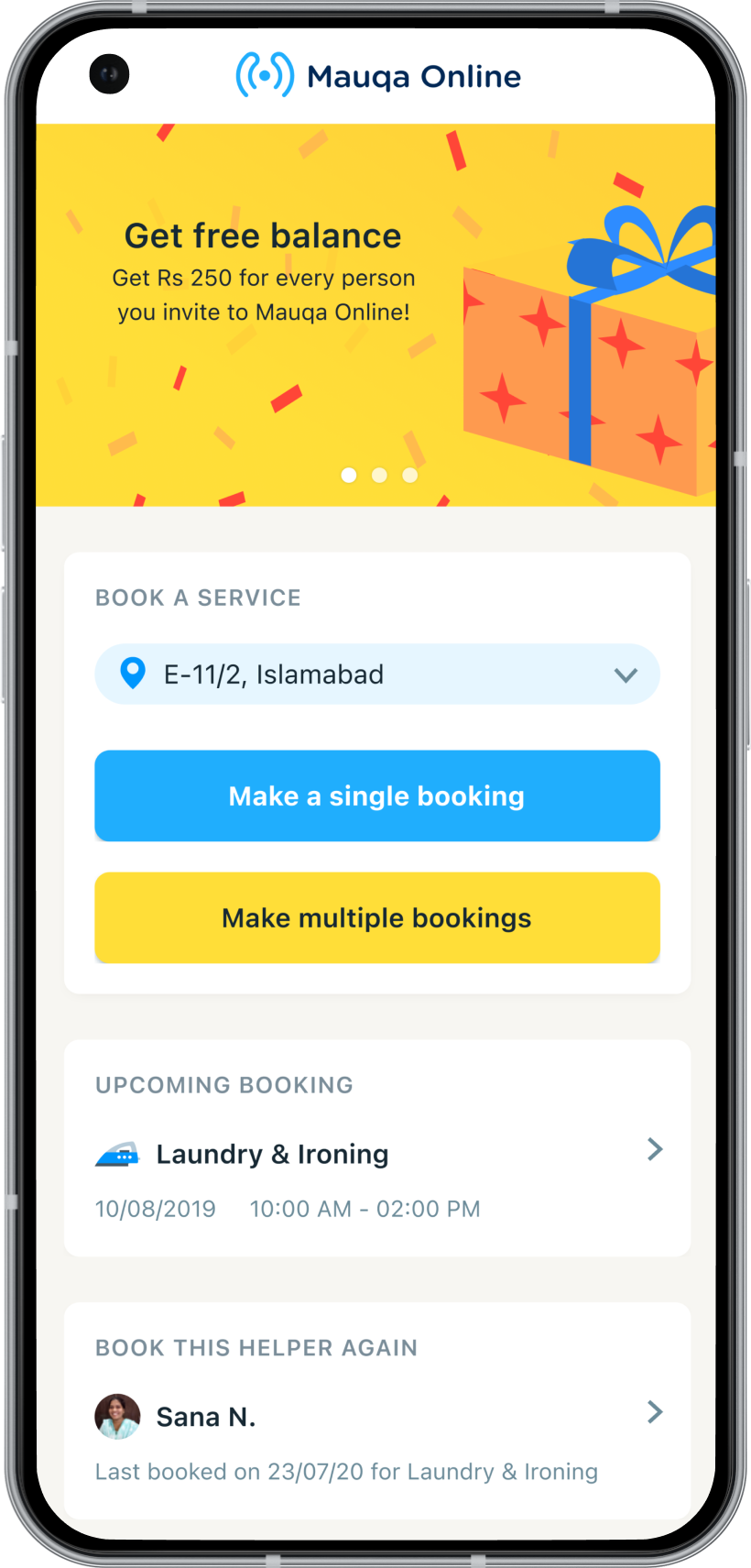Problem statement
Mauqa Online is an on-demand domestic help service that allows users to book workers for tasks such as cooking, cleaning, etc. These bookings can be made through the iOS or Android app.
The booking form on the customer app was underperforming. This was posing to be a big roadblock to company's growth.
The Product team reached out to existing customers to figure out pain points in the booking process. We conducted interviews and surveys with several customers and gathered information about their booking experience.
This led to a bunch of problems being identified:
- The availability of a suitable worker was revealed at the end, upon submitting the form. This meant that users had to fill out the whole form, make all their choices about the kind of help they needed, only to find out that there was no fitting worker available.
- There was no indicatation which of the user's selections had returned no results. It may have been the date, timing, service, gender, or a combination of all these.
- Users often selected multiple odd services for which there was no matching worker, such as ironing with babysitting.
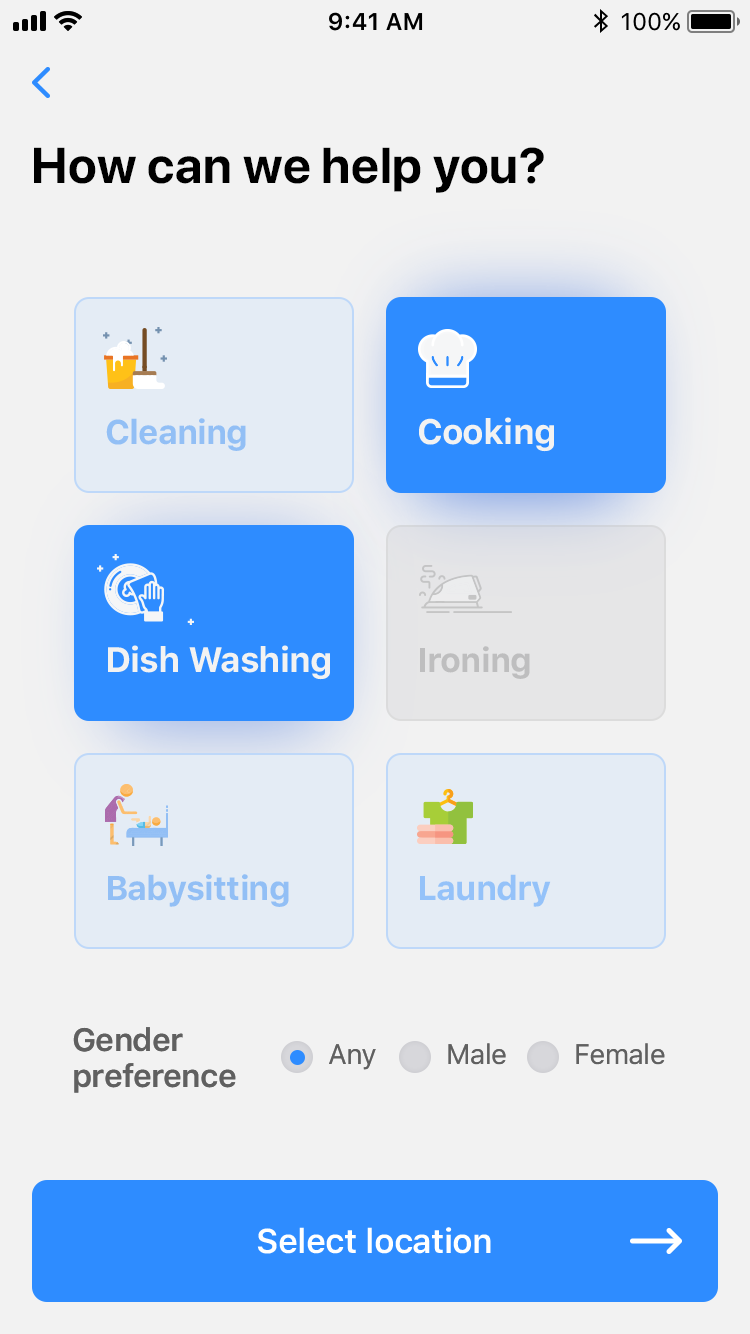
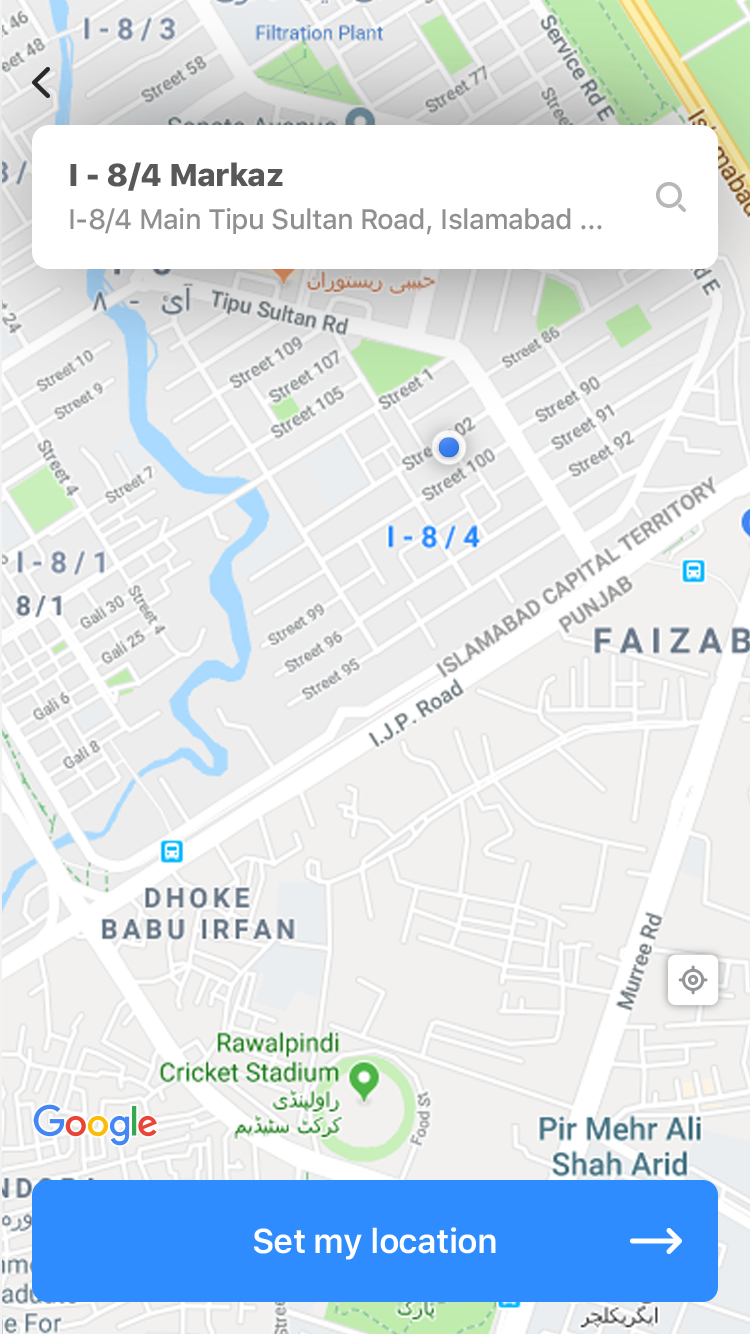
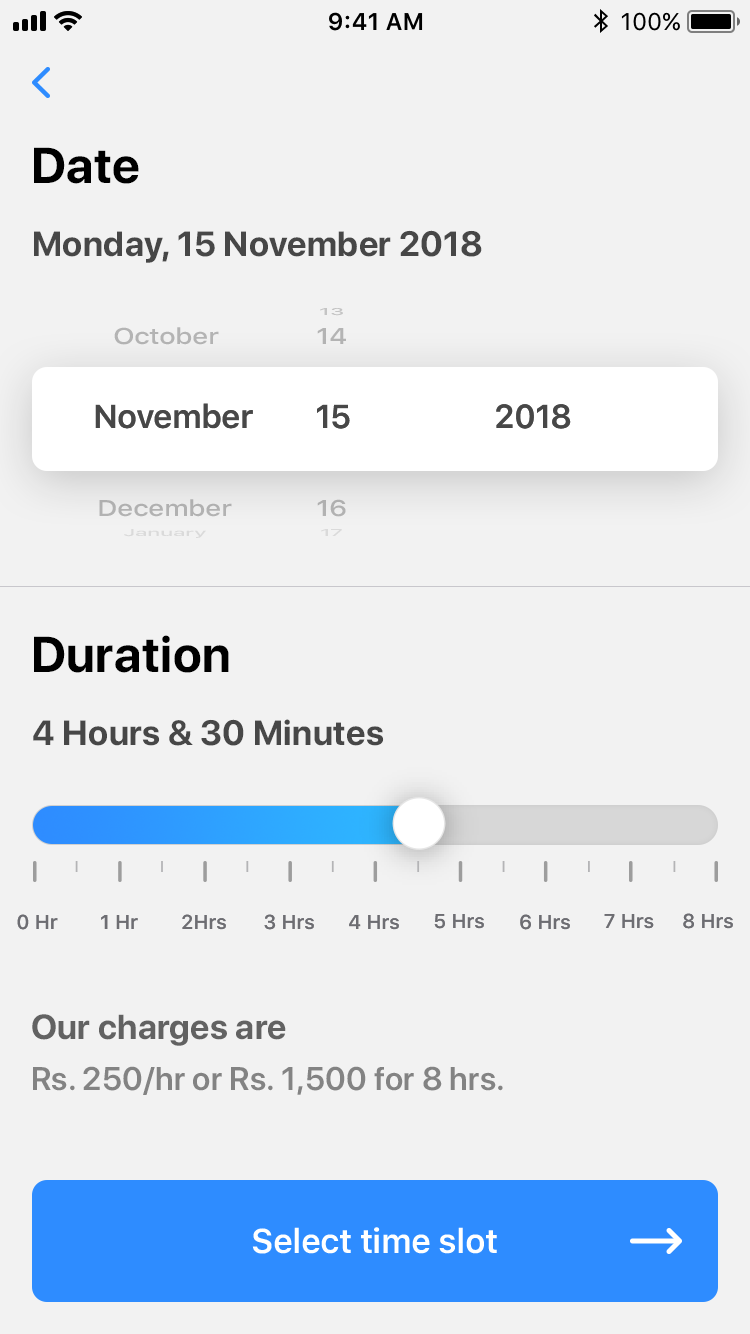
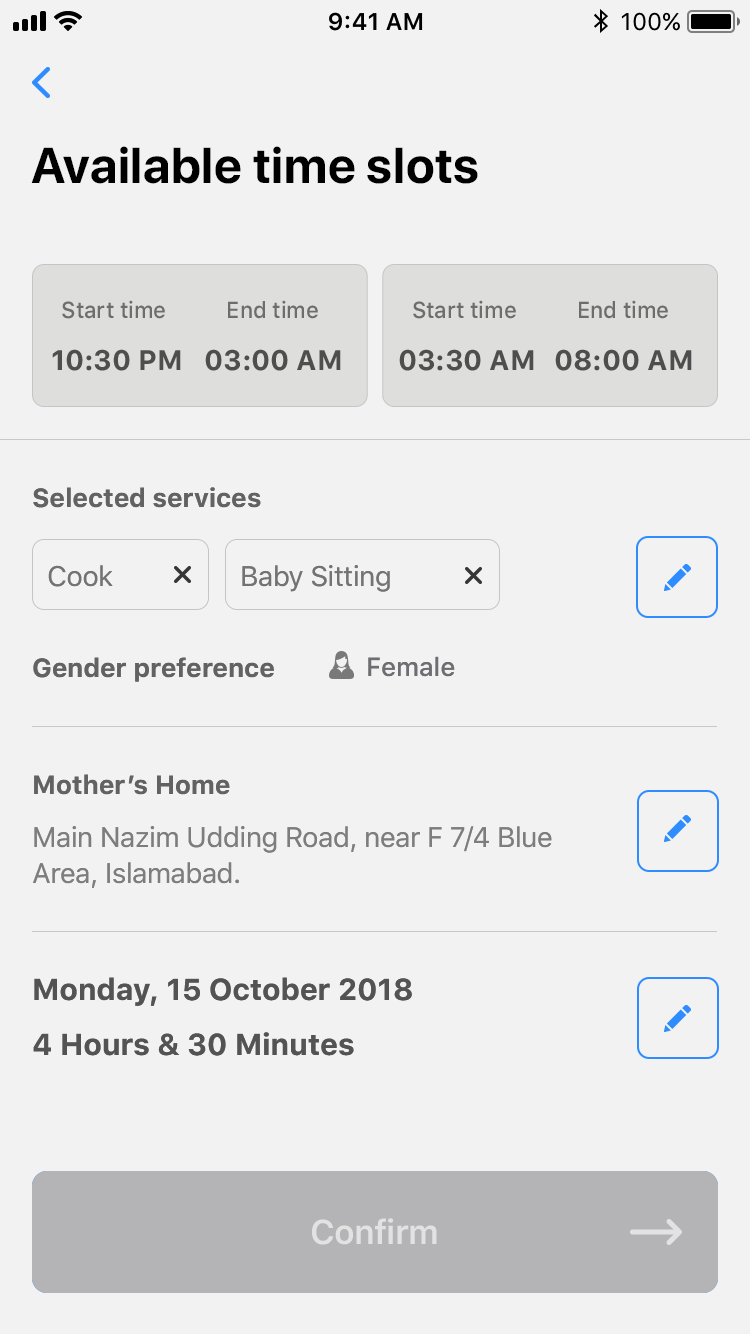
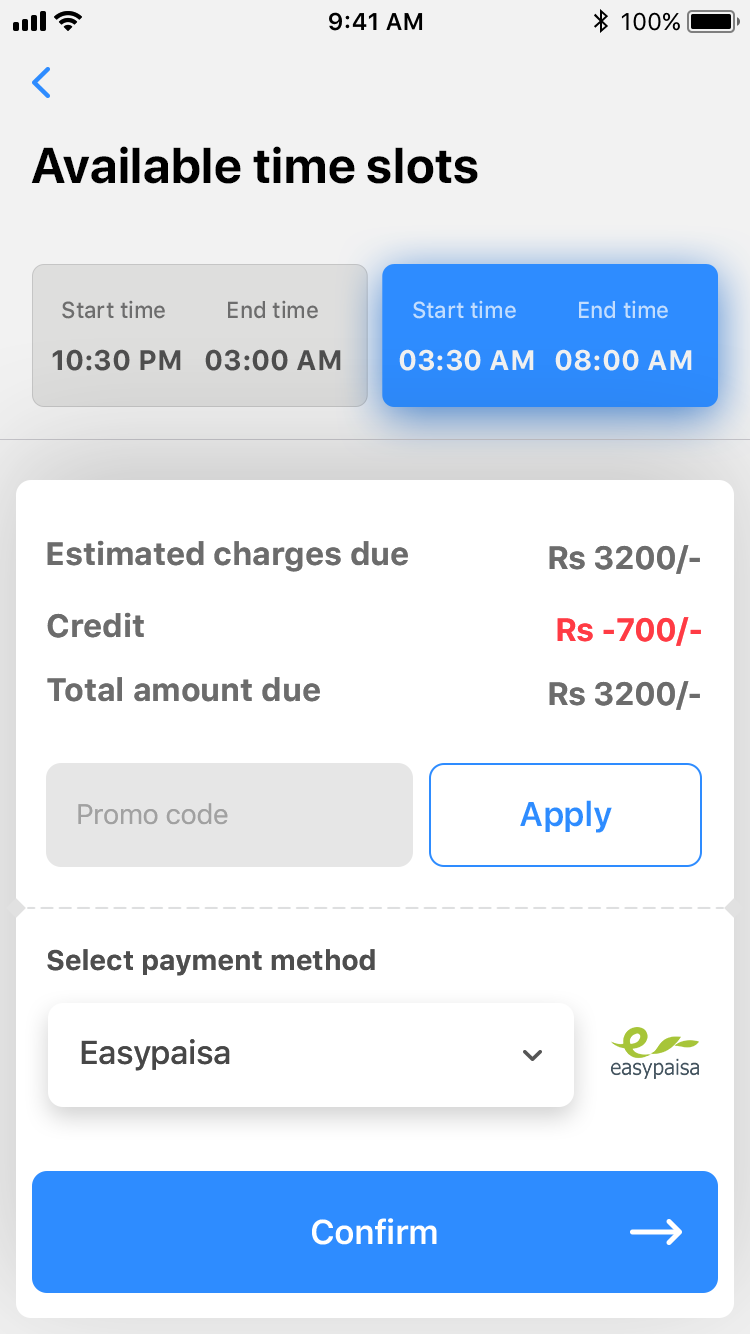
Hypotheses for solution
With these problems identified, I proposed a hypothesis to rearrange the inputs that a user has to fill. A user will be asked to input more ‘rigid’ requirements first, such as location and service, followed by more ‘flexible’ requirements, such as duration or timing. It was assumed that the user might change their more flexible selections to get a match with an available worker.
Moreover a user will be provided feedback on every input by filtering out workers in real time. If a selection by the user results in no matches, they were to be informed immediately.
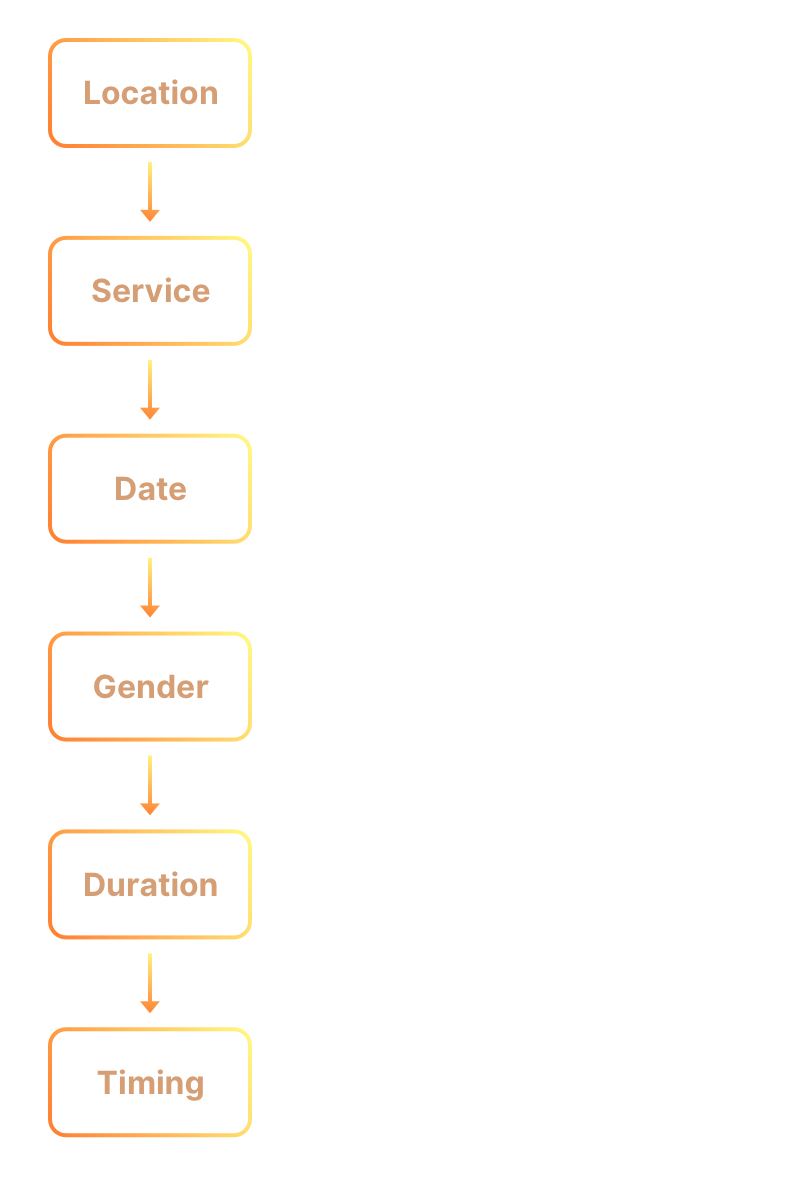
Design and Prototyping
I divided the form into more steps, with only one input per screen. Keeping in view our target persona of middle aged women, it was decided within the team to sacrifice speed and go for an easier form. One input per screen meant that it took longer to make a booking but this format was more convenient in providing instant feedback to the user on a mismatch, so they change their selection at each step.
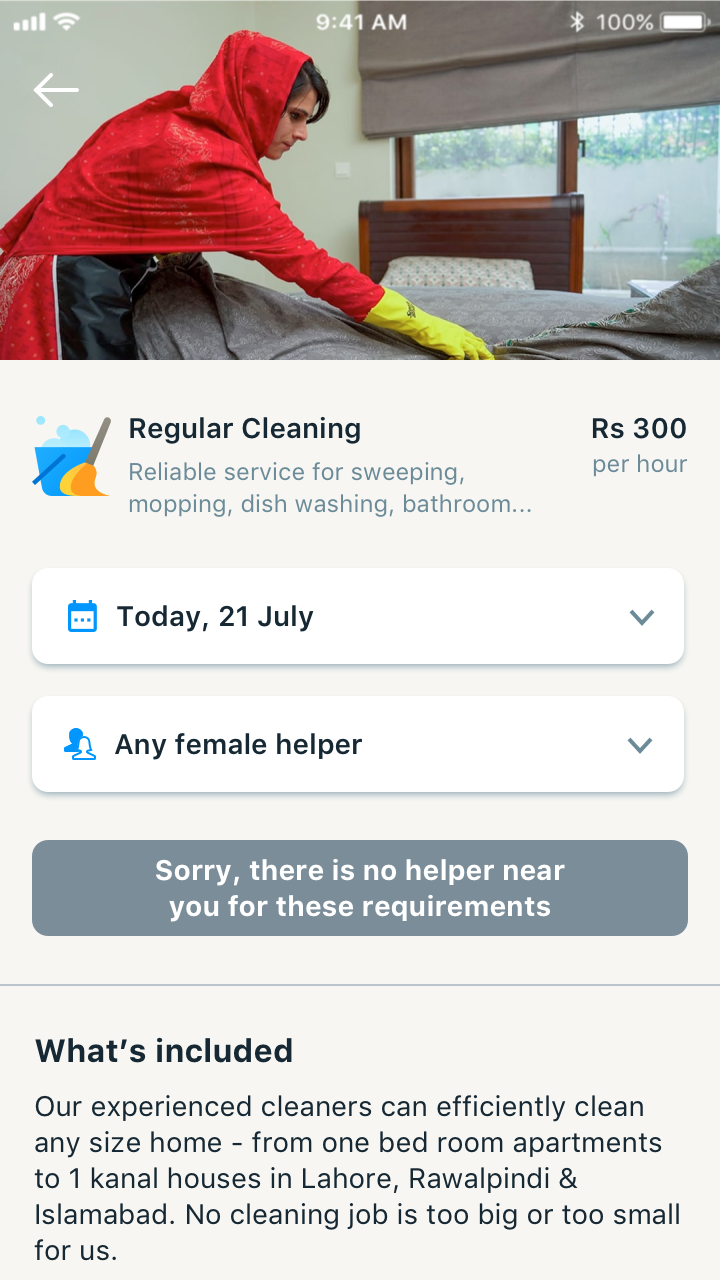
After discussing feasibility with engineering team, I had the booking API called on each service selection. This gave user instant feedback over mismatching services, such as Laundry with Cooking.
A desire for a less intimidating interface was raised internally. For this, I introduced a warmer background colour and more conversational headings asking for an input.
We tested out the prototype with the customers to whom we had reached out during surveys. With a few design iterations, the new flow was implemented into the app.
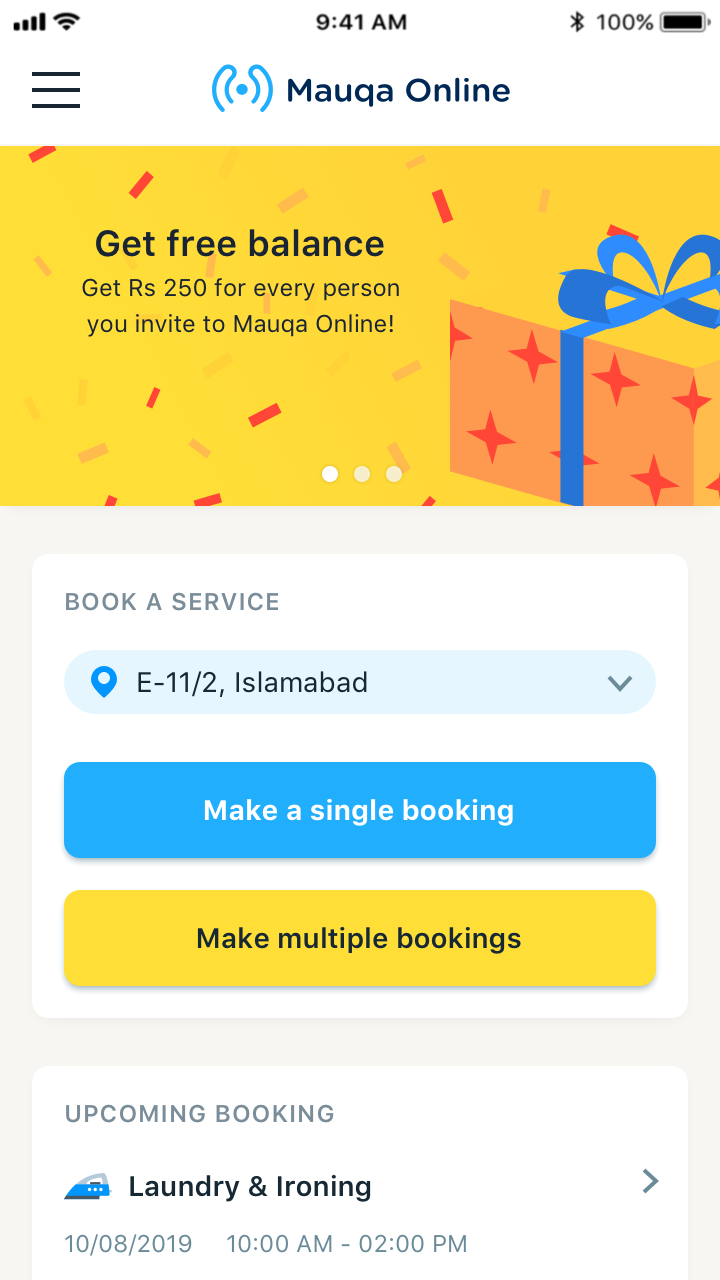
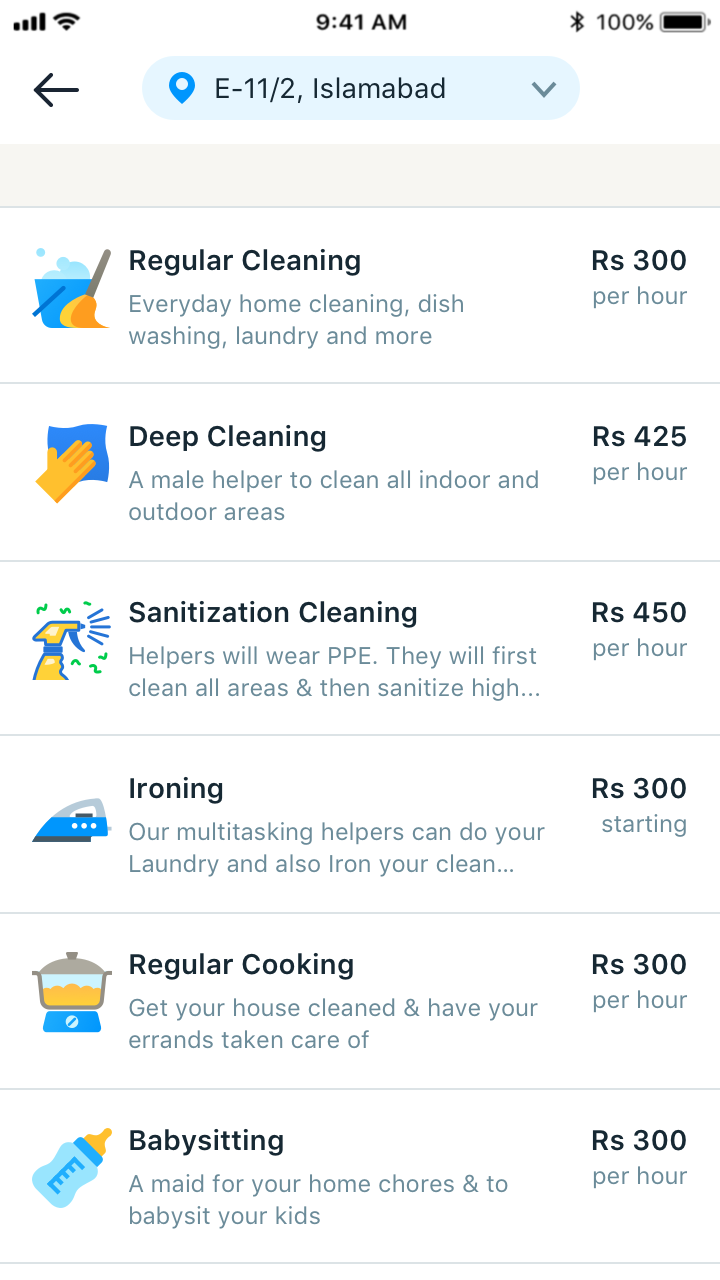
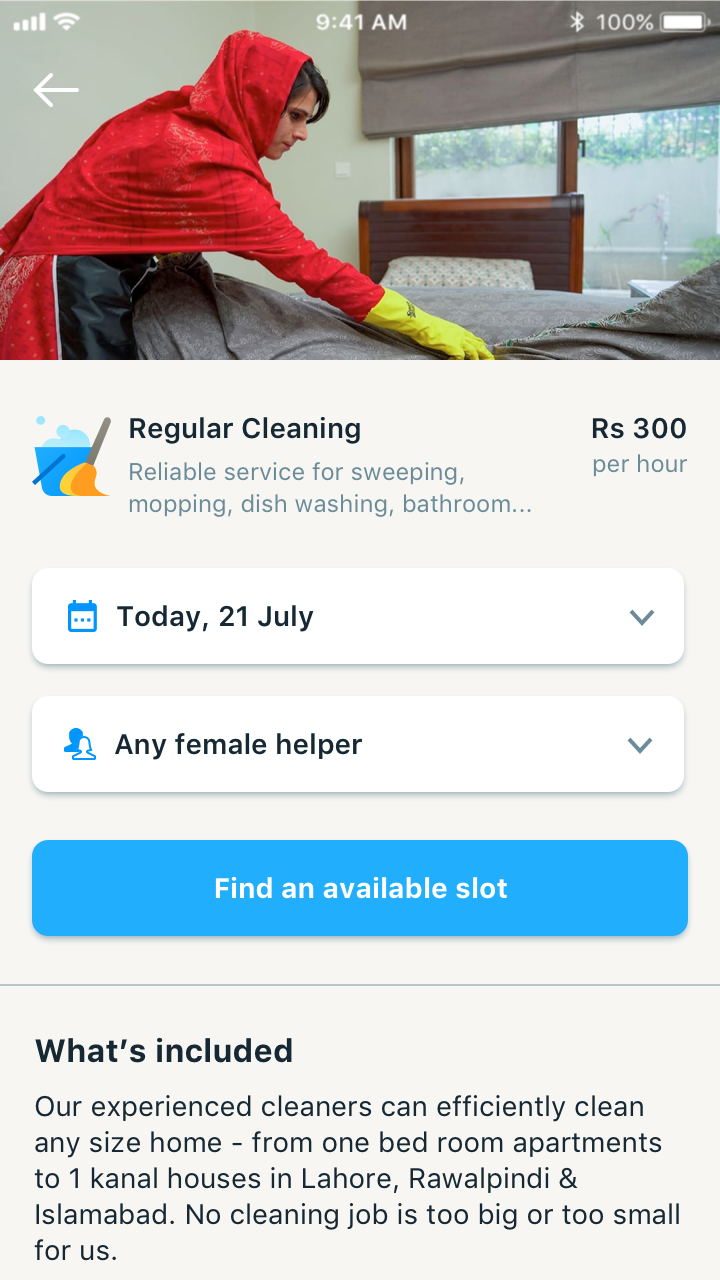
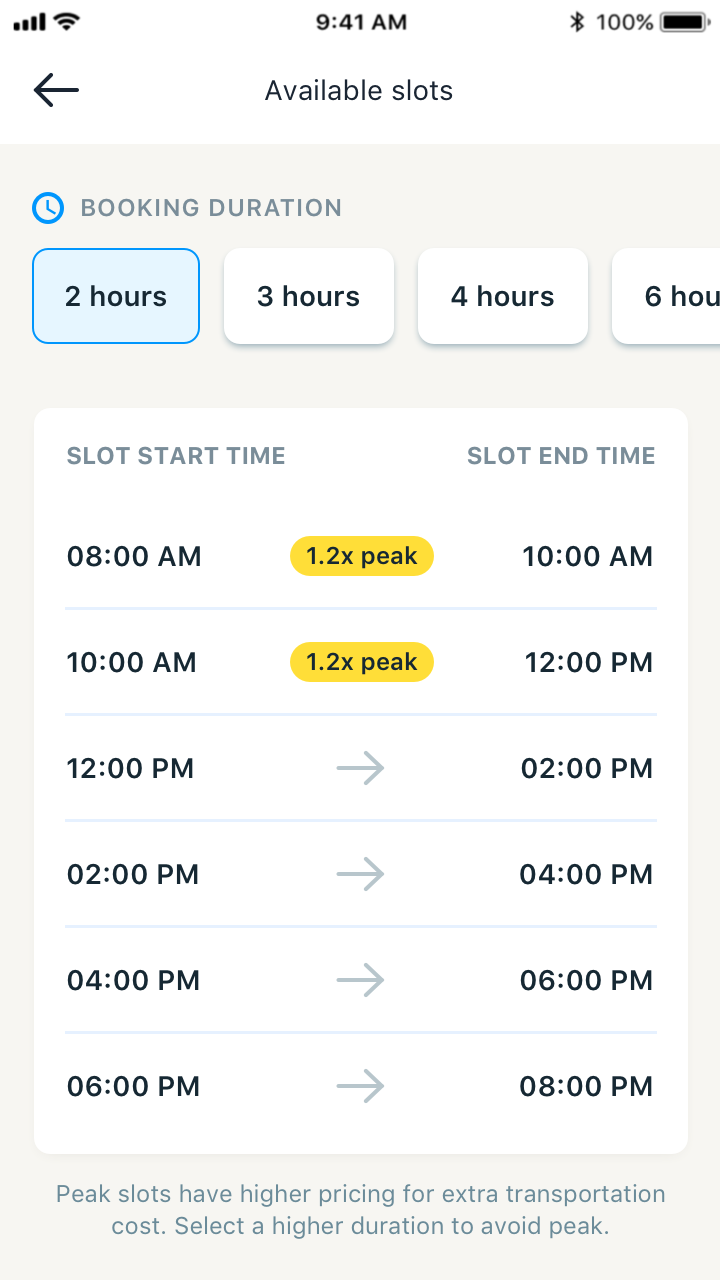
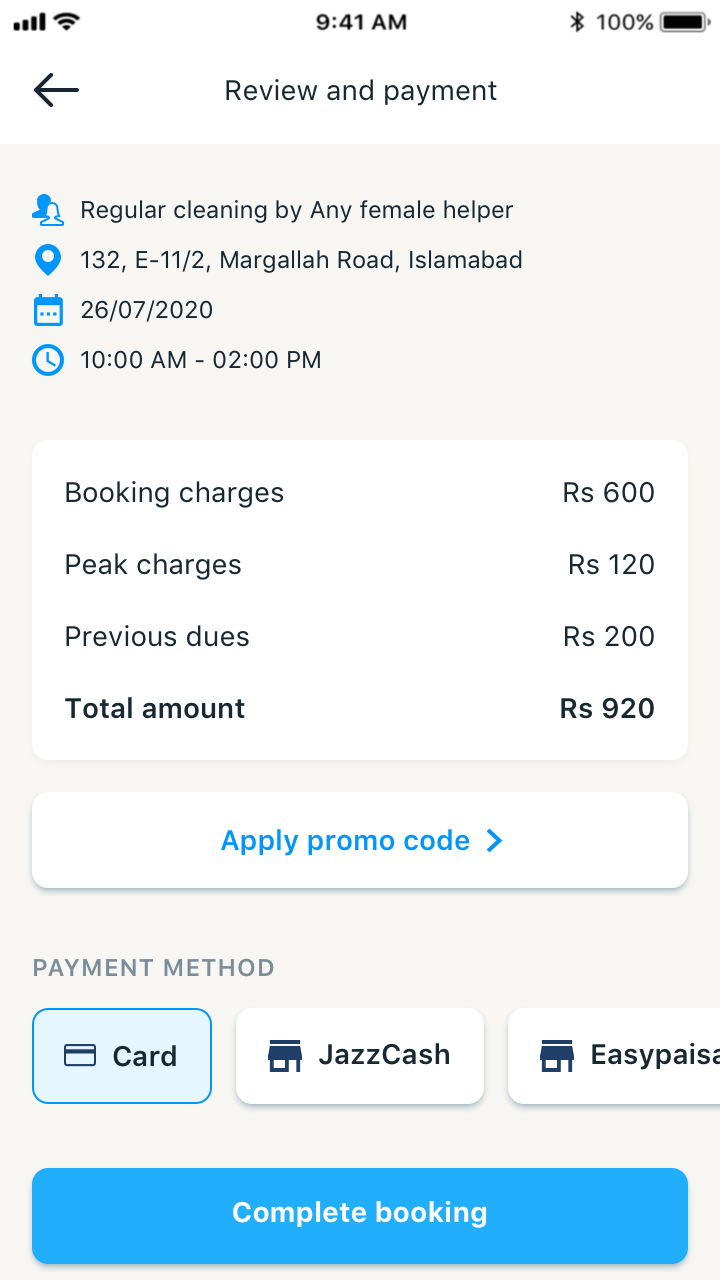
Results achieved
The results were a bit spotty at the start due to development difficulties. However, after several fixes and app updates, the new booking flow finally started showing improvements.
Performance of the funnel was still somewhat varied across sources and platforms. iOS performed better than Android and organic users converted better than those who came through advertisement. Formerly, the conversion rate averaged at 4%. After the new flow, the conversion rate averaged at around 18% while going up to 25% for some channels.
Ultimately it solved a major obstacle for Mauqa Online, allowing the company to scale their customer base by 5 times in six months.
